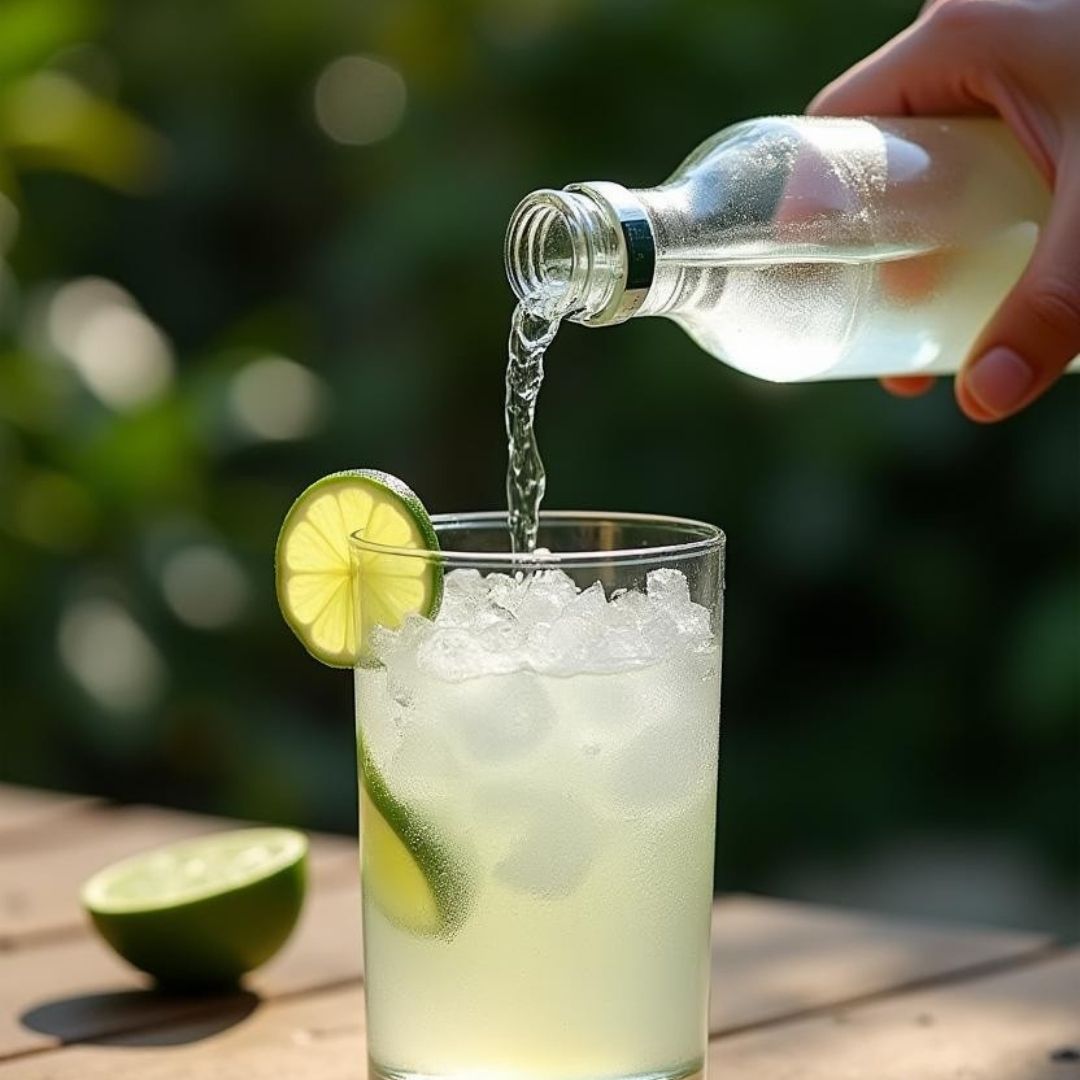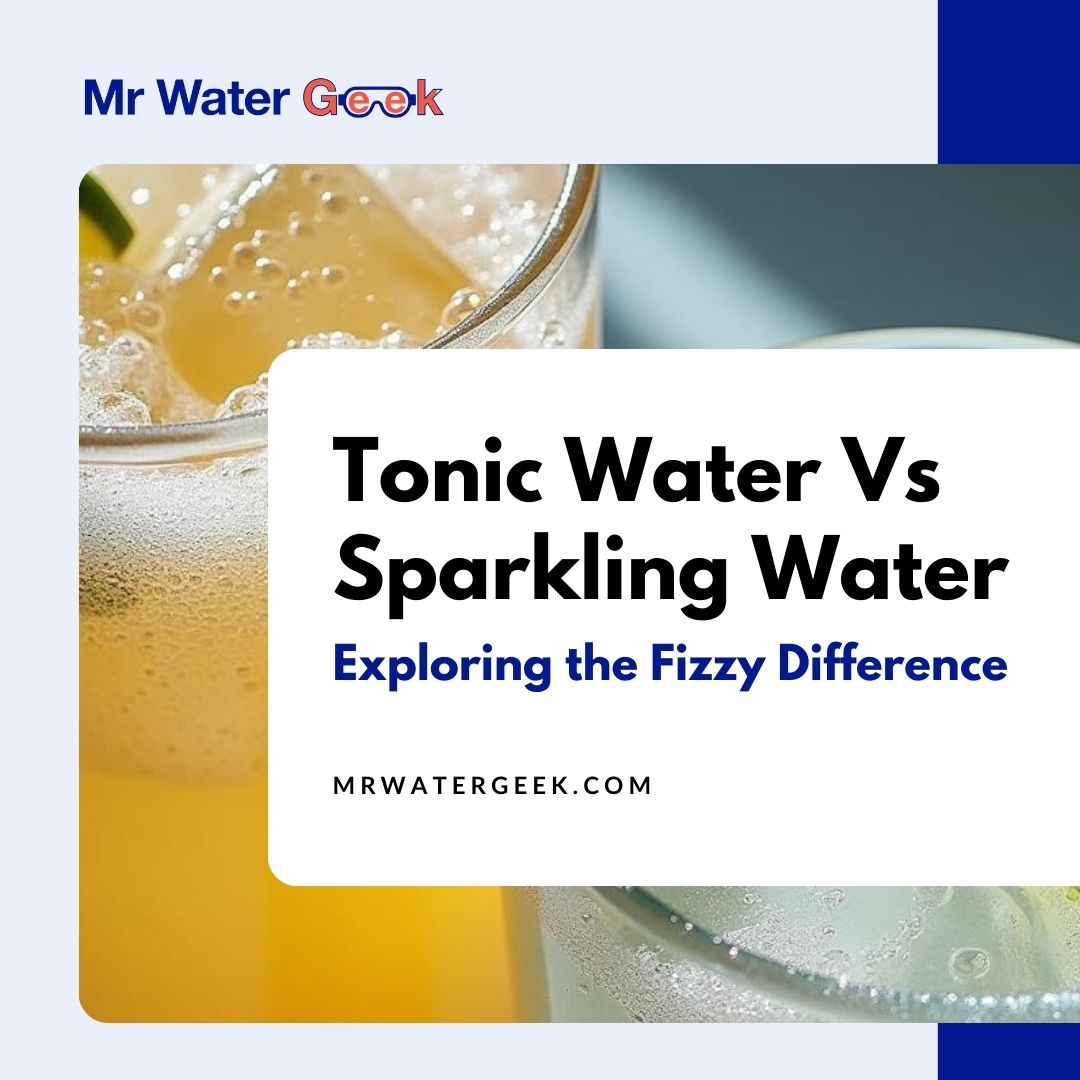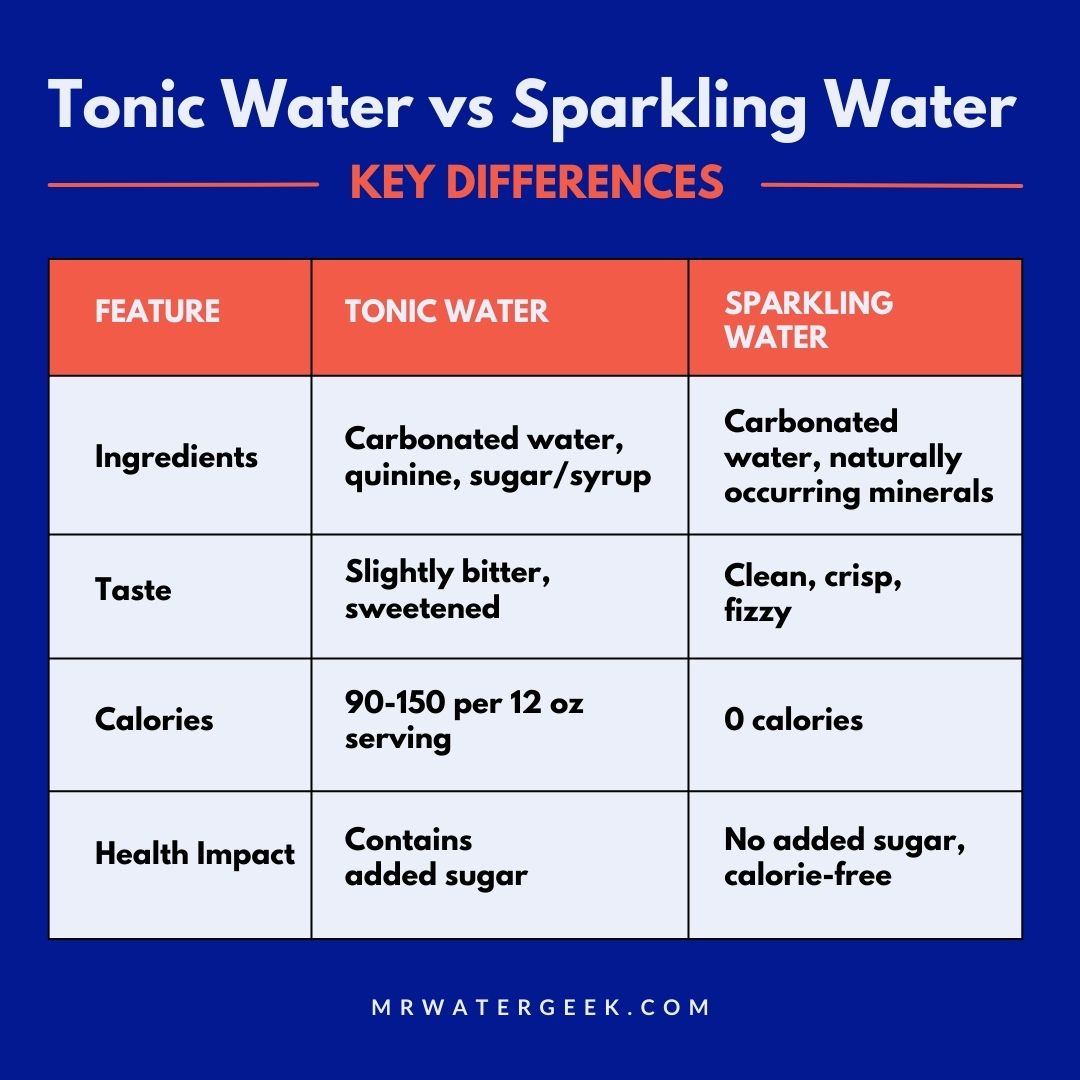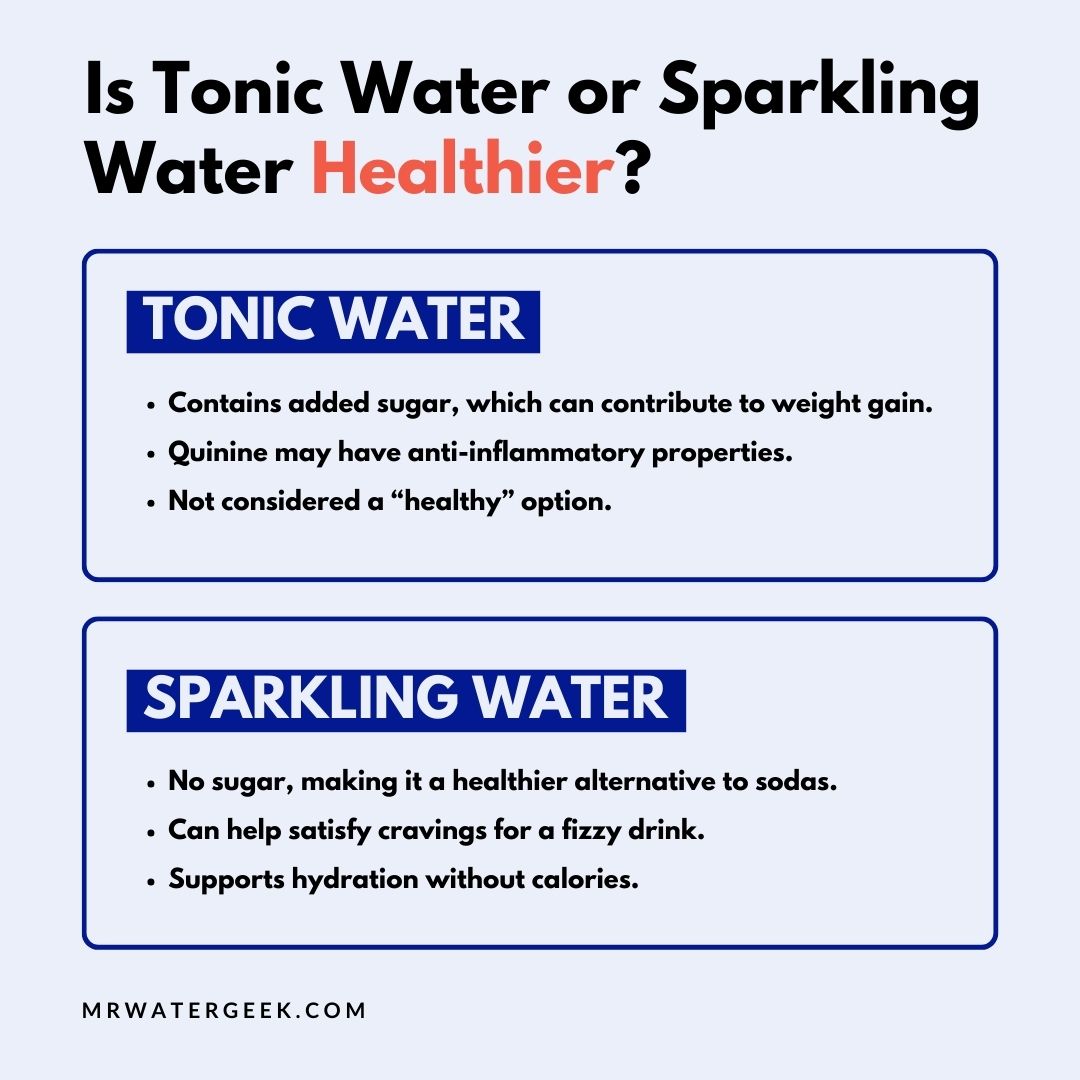Tonic Water Vs Sparkling Water: Key Differences and Benefits

In the world of beverages, carbonated waters have emerged as a popular refreshing and guilt-free alternative to the sugary sodas that have long dominated the market. Whether you’re a fan of the subtle fizz of sparkling water or the distinctive taste of tonic water, these carbonated beverages offer a diverse range of options to quench your thirst.
As someone who appreciates the nuances of these carbonated delights, I’m excited to dive deep into the world of tonic water and sparkling water, exploring their similarities and differences that set them apart. By the end of this post, you’ll have identified the carbonated beverage that best suits your taste preferences and health goals.

Tonic Water Vs Sparkling Water
Tonic water and sparkling water may seem quite similar at first glance, as they both offer a bubbly, refreshing experience. However, there are some key differences between the two that are worth exploring.
Tonic water and sparkling water are both carbonated beverages filled with carbon dioxide gas for their signature fizz. However, their production methods and ingredients differ significantly.
In this post, we’ll take a closer look at the composition, taste, and health benefits of tonic water versus sparkling water, so you can make an informed decision about which one to reach for next time you’re in the mood for a carbonated treat.

What Is Tonic Water?
Tonic water is a carbonated beverage that has been around since the 19th century. Originally created to deliver quinine, extracted from the bark of the cinchona tree, to British colonists in India fighting malaria, it now flavors tonic water. This is why your bartender might press the Q button on the soda gun.
Quinine has a distinctive, slightly bitter taste, which is why tonic water has a unique flavor profile that sets it apart from other carbonated beverages. In addition to quinine, tonic water also contains high fructose corn syrup or sugar, which helps to balance out the bitterness of the quinine. Tonic water and club soda are also often used interchangeably, but they are not exactly the same.
What Is In Tonic Water?
The main ingredients in tonic water are:
- Carbonated water
- Quinine
- Sugar or high fructose corn syrup
Quinine gives tonic water its signature taste, while sugar or high fructose corn syrup balances the bitterness, creating a more palatable flavor.
What Does Tonic Water Taste Like?
Tonic water has a distinctive, slightly bitter taste that comes from the quinine, while the added sugar or high fructose corn syrup helps to balance out the flavor, resulting in a crisp, refreshing taste.
Some people also detect subtle citrus or herbal notes in tonic water, which can vary depending on the brand and the specific blend of ingredients used.
How Many Calories Are In Tonic Water?
Tonic water typically contains between 90-150 calories per 12-ounce serving, depending on the brand and the amount of sugar or high fructose corn syrup added.
Is Tonic Water Healthy?
Tonic water contributes to weight gain and other health issues when consumed in excess due to its added sugar or high fructose corn syrup, making it less of a “healthy” beverage.
However, the quinine in tonic water has been shown to have anti-inflammatory properties and may even help to reduce the risk of certain types of cancer.
What Is Sparkling Water?
Manufacturers create sparkling water, also known as seltzer or club soda, by infusing regular water with carbon dioxide gas. People often use “seltzer” and “sparkling” interchangeably to describe carbonated water without added flavors or sweeteners. This process creates the signature fizz and bubbles that are characteristic of sparkling water.
Unlike tonic water, sparkling water does not contain any added sugars, sweeteners, or other flavorings. It is simply carbonated water, with the potential addition of naturally occurring minerals.
What Is In Sparkling Water?
The main ingredients in sparkling water are:
- Carbonated water
- Naturally occurring minerals (in some cases)
Sparkling water is made by taking regular water and adding carbon dioxide gas to it, which creates the fizzy, bubbly texture. Some brands of sparkling water may also contain small amounts of naturally occurring minerals, such as sodium bicarbonate, which can give the water a slightly salty or mineral-like taste (often called sparkling mineral water).
What Does Sparkling Water Taste Like?
Sparkling water has a clean, refreshing taste that is often described as being similar to soda, but without the added sugars or sweeteners. The carbonation provides a pleasant, fizzy mouthfeel, while the lack of added flavors allows the natural taste of the water to shine through.
Some sparkling waters may have a slightly mineral or salty taste, depending on the natural composition of the water and any added minerals. But overall, the taste of sparkling water is generally light, crisp, and highly refreshing.
How Many Calories Are In Sparkling Water?
Sparkling water remains calorie-free because it contains no added sugars or sweeteners. Look for the zero-calorie label on the packaging to ensure you’re grabbing sparkling water instead of tonic water!

Is Sparkling Water Healthy?
People generally consider sparkling water a healthier alternative to sugary sodas and other carbonated beverages. Since it does not contain any added sugars, sweeteners, or other unhealthy ingredients, sparkling water is a calorie-free option that can help satisfy your thirst and cravings for a carbonated drink.
Additionally, some sparkling waters may contain small amounts of naturally occurring minerals, which can provide additional health benefits. For example, some sparkling waters may contain sodium bicarbonate, which can help regulate the body’s pH levels and support overall health.
Can You Substitute Tonic Water For Sparkling Water?
While tonic water and sparkling water may seem similar at first glance, they are not interchangeable in terms of their use and application. Attempting to substitute one for the other can significantly alter the taste and composition of a recipe or beverage.
Tonic water, with its distinctive quinine flavor and added sugar or high fructose corn syrup, would not be a suitable substitute for the clean, unsweetened taste of sparkling water. Likewise, sparkling water would not be a good replacement for the unique flavor profile of tonic water.
The key differences between tonic water and sparkling water lie in their ingredients, taste, and overall composition. Tonic water is a sweetened, slightly bitter beverage, while sparkling water is a calorie-free, unsweetened option that simply features the refreshing fizz of carbon dioxide gas.
So, while both tonic water and sparkling water are carbonated beverages, they serve different purposes and should not be used interchangeably. Knowing the distinct characteristics of each can help you make the best choice for your specific needs and preferences.
The choice between both options depends on your taste preferences and health goals.
Overall, both tonic water and sparkling water can be enjoyable and refreshing options, but the choice ultimately comes down to your taste preferences and health goals. Whether you prefer the slightly bitter flavor of tonic water or the clean, fizzy taste of sparkling water, there’s a carbonated beverage out there that’s sure to quench your thirst and satisfy your cravings.
For more information on beneficial water therapies and all things around the benefits of water, stay tuned to my blog. I’m always available to give recommendations, reviews, and health information about water. If you found this particular post helpful, you might want to check out my posts on the pros and cons of drinking salt water, the effects of drinking salt water, and this salt water flush recipe.
Stay hydrated,
Shashank Varma (Mr. Water Geek)
